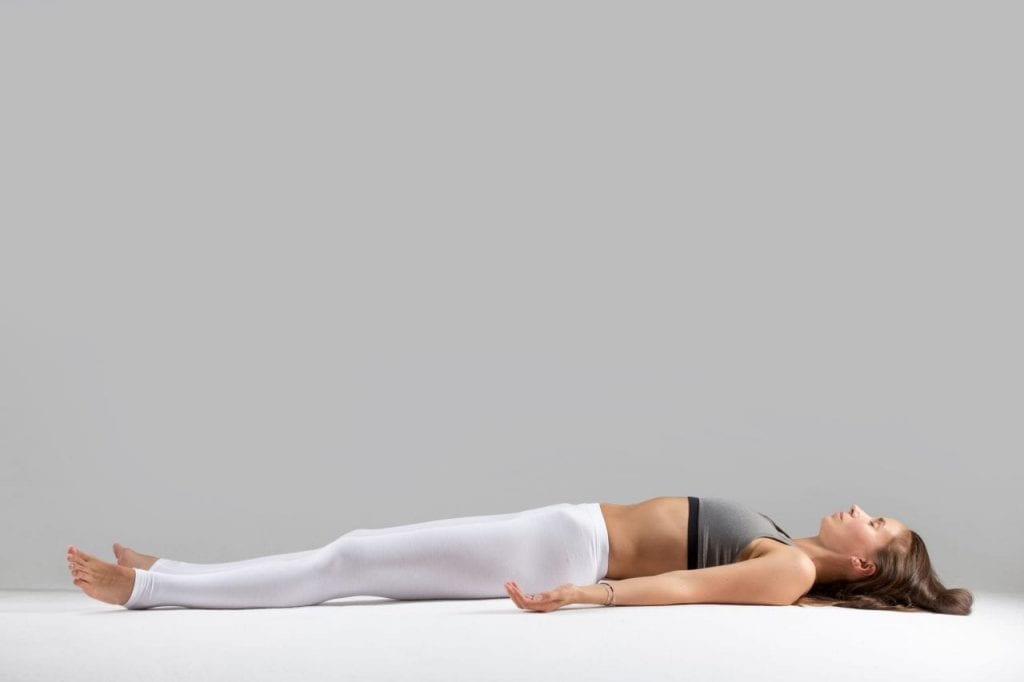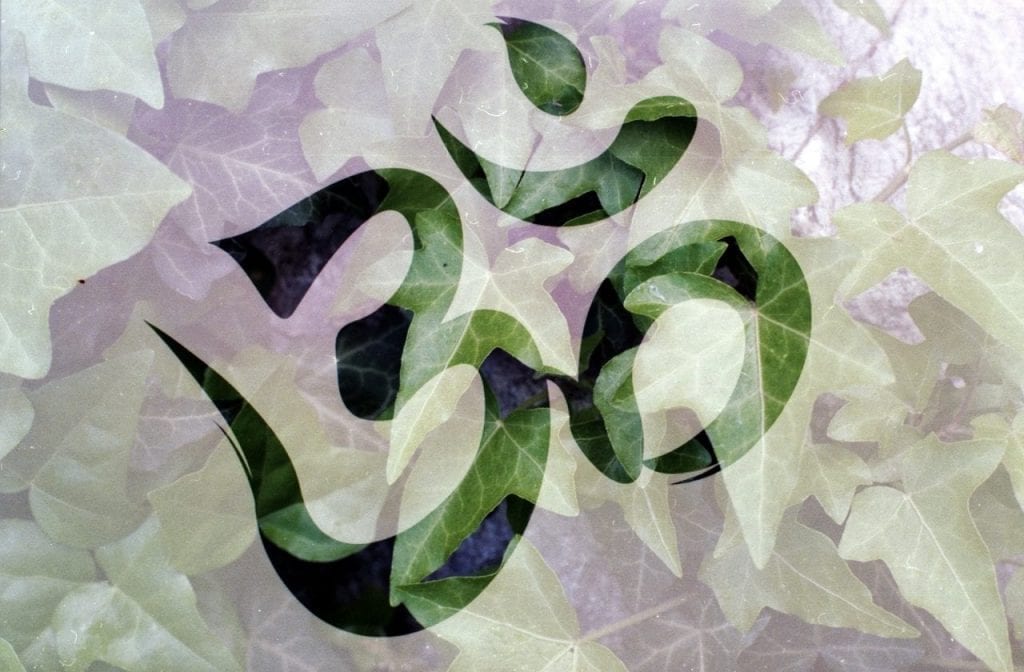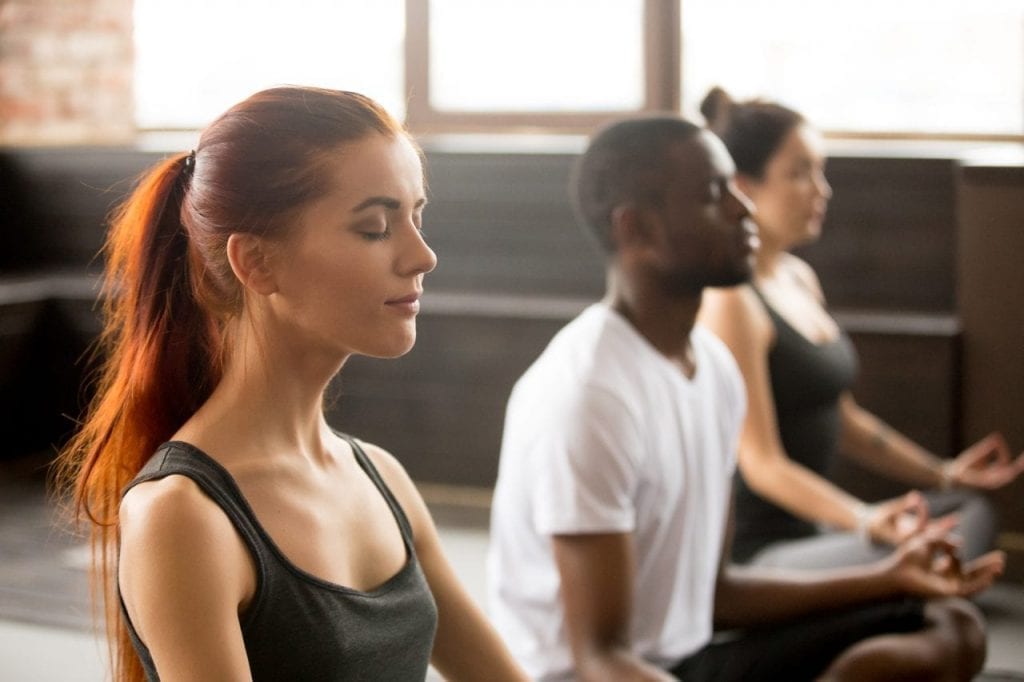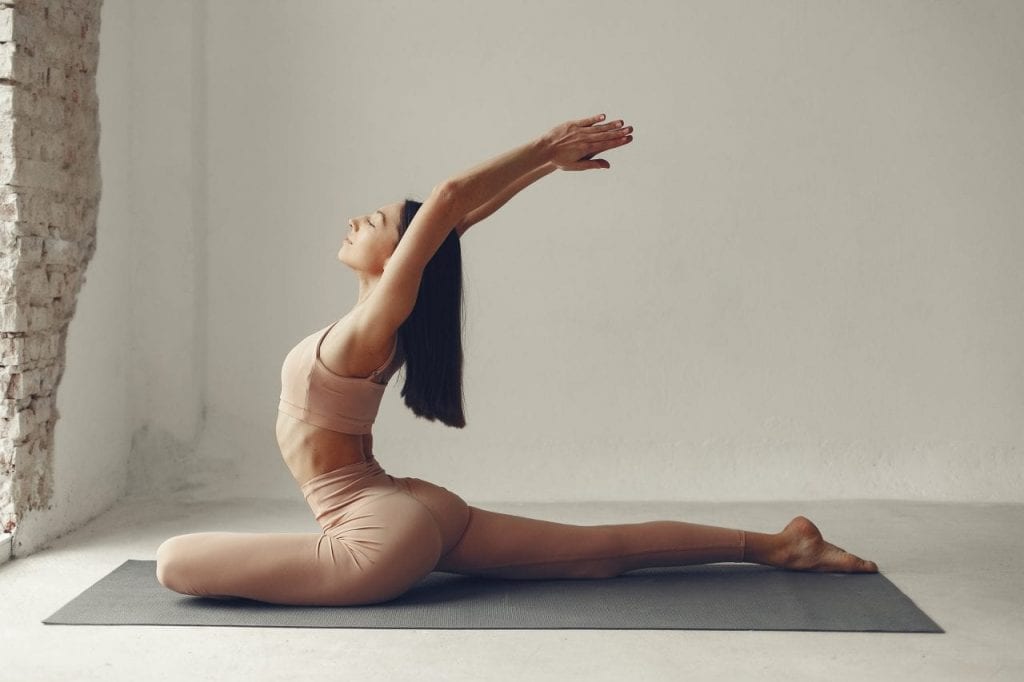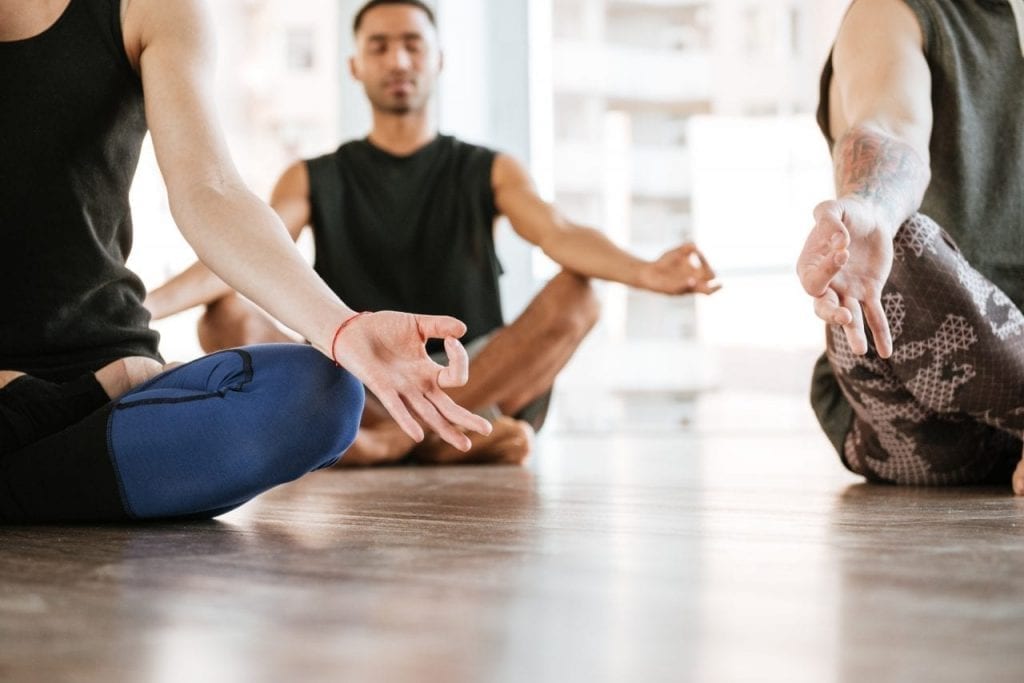Abhaya mudra dates back even before the birth of yoga. It dates back to ancient times when religions like Hinduism, Buddhism, Jainism were being birthed. Abhaya in Sanskrit means ‘fearlessness.’
Abhaya mudra, as the name suggests, is the mudra of fearlessness. Many buddha paintings and statues are seen with Buddha practicing the ancient and powerful Abhaya Mudra. One of the simplest mudras to practice, Abhaya mudra is practiced to cultivate fearlessness and peace.
In ancient times, Abhaya mudra was used as a friendly gesture of friendship and display a sign of goodwill. People greeted each other with the Abhaya mudra, where the right hand is open, empty and facing the other person. It meant that the person is unarmed and comes bearing gifts of peace, protection, stability, security and friendship.
This sublime mudra is practiced worldwide by yogis, spiritual seekers and religious devotees to cultivate a sense of strength and protection against negative energies and attacks. The mudra symbolizes that the person is protected and secure against evil and harmful energies, as this yoga mudra also helps cultivate spiritual strength and compassion.
When an overflowing lake was going to flood over the hut Buddha was staying in, he used Abhaya mudra to block the overflowing river and protected the hut and village. Such is the power and strength of Abhaya mudra when practiced sincerely and accurately.
One of the most extraordinarily simple hand mudras, Abhaya mudra, is also mentioned in Gandhara scriptures and depicted in Buddhist Gandhara art. The fifth Dhyani Buddha, known as the Amoghasiddhi, is the most famous Buddha avatar displaying the Abhaya Mudra.
In Buddhist, Hindu, Jain and yogic cultures, this mudra is also used as a sign of bestowing blessings upon others. As it is well known that hands contain immense spiritual energy, this yoga mudra is used to bless and transmit spiritual healing energy to others through the hands.
How to practice Abhaya Mudra
Technique
- Sit in sukhasana, padmasana or any other meditative posture. Use a cushion to be able to sit for a longer duration. If you have trouble sitting on the floor due to health reasons, you can practice this mudra lying down, sitting on a chair or standing.
- Close your eyes, and use your breath to clear your mind of past energies and thoughts. Come into the present moment.
- Keep your left hand relaxed while your left palm stays relaxed in the center of your pelvic region facing upwards.
- As you relax your left hand in the right position, bring your right hand up and your palm to your shoulder level. Keep the palm open and facing forward. Relax the grip of your palm. Abhaya mudra intends to cultivate spiritual, mental, emotional and physical strength that is relaxed yet strong.
- Stay in the mudra and feel how the mudra brings changes to your energy body, your thoughts, emotions and mental state. Feel and observe how to this yoga mudra, helps you in cultivating fearlessness and protection.
- In the beginning, you can practice this mudra for 5-10 minutes, depending on your comfort level and needs. Remember, this or any other mudra can be mastered only with regular and sincere practice.
- As you practice regularly, you can increase the time to 15 minutes and take it up to 30 minutes as you progress.
- To release the mudra, gently lower your right hand and relax. Release your left from the center position of the pelvic floor. Open your eyes and breathe freely.
Benefits of Abhaya Mudra
Healing the nervous system
This sublimely simple mudra is one of the most excellent mudras for healing the nervous system. Nervous system disorders cause severe anxiety, restlessness, and distortions in thoughts. Abhaya mudra calms the nervous system and helps cultivate a sense of safety and protection.
Once we feel a sense of safety and protection, our nervous system stops sending alert messages and begins to heal and activate mental, emotional, physical, and spiritual healing.
Cultivating fearlessness, peace, and friendship
Abhaya mudra has been used for thousands of years as a gesture, a ‘seal’ for cultivating fearlessness. It helps in healing fear within and also helps in cultivating protection against evil energies.
Abhaya mudra is a sign of peace and harmony, and in ancient times people used this yoga mudra to greet others and transmit the message of the brotherhood and cooperation. When someone came bearing Abhaya mudra, it meant that they had good intentions and were unarmed.
This mudra is excellent to cultivate the attitude of fearlessness so that you can face your challenges head-on and with grace.
Spiritual power and growth
Abhaya mudra is also a sign of spiritual power. When a drunken elephant was unleashed on Buddha by someone who wanted to harm him, Buddha used his spiritual power with the help of Abhaya mudra to calm the elephant.
As soon as the elephant came in contact with Buddha, the mad drunken elephant surrendered to Buddha’s peace and compassion. Buddha very fearlessly held the Abhaya mudra to calm the elephant.
Abhaya mudra, when practiced regularly and with devotion, helps develop spiritual power and strength and thus helps us reach higher states of spiritual awareness and consciousness.
Contents



